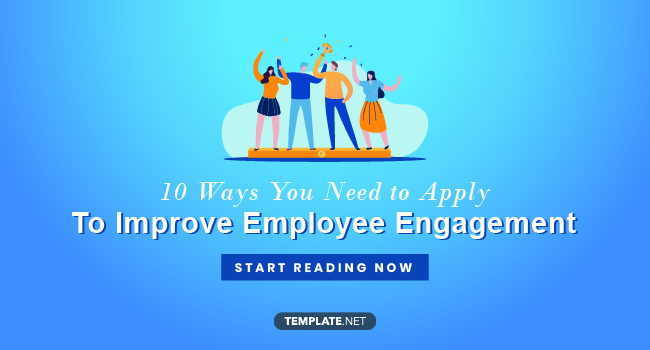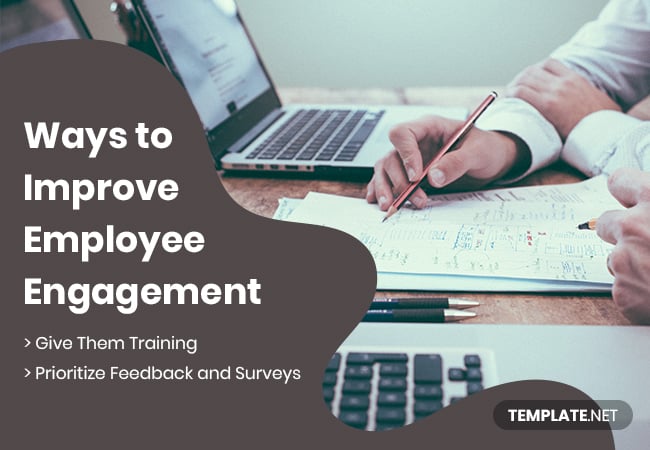Ways to Improve Employee Engagement
You have already given your employees good pay and benefits. And yet, you still see people coming and going in your company. What else could they ask for, right? Well, the ugly truth is, money isn’t everything to some people. And those people may include your workers. Delightful employees last longer and contribute to the company’s growth. However, the percentage of happy employees worldwide is only 15%, as reported by the State of the Global Workplace on Gallup’s statistics. This is proof that HR roles aren’t all about payroll and performance management. HR also needs to work hard on meeting the happiness of the workers. So what else makes employees happy?

Ways to Improve Employee Engagement
Employee Engagement
Employee engagement makes employees happy. It is a strategy that drives workers to become passionate and devoted to their jobs. It makes the workforce express ideas and concerns freely to employers—which contributes to the success of employee management with employee relations.
Why is Employee Engagement Important?
Employee engagement is essential because it lessens the risk of a high employee turnover rate. With long-lasting workers, HR won’t have to invest more in recruitment and development for replacements. Moreover, these long-term employees can continue to grow and become substantial assets of the company.
Ways to Improve Employee Engagement

To keep employees interested, you need a smart plan! Here is a checklist of the ways to improve employee engagement.
Give Them Training
Whether it’s for new employees or career growth, training makes workers feel that the company cares for their growth and advancement. It also gives confidence to the workforce about their job posts. Once the employees are properly oriented with their tasks, it will be easier for them to focus on their areas for improvement.
Prioritize Feedback and Surveys
Conducting surveys will measure how engaged employees are in the workplace. By pointing the right questions, you will know where to improve to have a more engaged workforce. Here are the main points that need to be highlighted:
Employee Relations
Ask questions regarding the existing relationship and communication between the leaders of the company and the employees. The questions should reveal if the workers are informed enough of the significant happenings in the business. Moreover, the results should also state if the employers have met their professional needs. Employers will know if they have served as good role models and have given appealing visions to inspire the workforce.
Access to Tools
Are the employees given enough resources to do their tasks well? Lack of tools will affect their productivity and discourage engagement.
Learning and Development

What activities can the employees suggest for continuous learning? Are they given enough training and coaching sessions to develop? These questions will provide management insights about the quality and quantity of activities to be conducted for the workforce’s development.
Improvement Awareness
These questions are set to know if employees are recognized for their hard work and improvement. Developing their self-esteem improves their interactions with co-workers and managers.
Career Aspirations
These survey questions will test if the management has given enough emotional support to make employees believe that something big awaits them in the company. Once employees feel that they have a unique contribution to the enterprise’s development, they will most likely commit to their employer. Giving out surveys shows that you give importance to the well-being and comfort of your people.
Be Flexible
After getting the results of the survey, employers should be flexible enough to eliminate or at least lessen the burdens stated by their employees.
Aside from proper tools and resources, work-life balance plays a crucial role in the overall performance of employees. Longer working hours with no further notice will burn them out. Stressed employees result in unproductivity, or worse—a high employee turnover rate.
The convenience of technology allows more flexible working schedules for workers. Refrain from taking away their personal time. Instead, you can offer the workers a period to work from home. Outsourcing employees from staffing agencies is also an option you want to consider. By adapting to the modern ways of handling the workforce, you lessen the risks of losing valuable workers.
Be Authentic
Being an authentic employer means sticking to your standards. Your standards are set as a reference to your employees. They will then quickly identify their goals and limitations. Aside from being an authentic leader, it is also essential to keep an authentic environment for the workforce. This means that the workplace should also be a melting pot of diverse personalities and cultures. Respect for each other’s differences produces a healthy and conducive place for employee engagement.
Offer Visibility
Visibility in the workplace means employers are within reach of the employees. It also means managers recognize outstanding performances and top talents. A large percentage of employees who are 37 years old and below would love to learn more when there’s recognition, as reported by 2020 LinkedIn Learning Data.
Arrange events such as peer recognition days or acquaintance parties. These occasions will give employers and managers the chance to share words of wisdom that will inspire workers. These will also encourage employees to engage with one another. Such practices will develop a fun and healthy workplace.
Give Them Opportunity
When you are already within the radar of your employees, it will be easier for you to uplift your best talents because you are no longer an alien to them. They will be at ease whenever you want to give them hands-on mentoring. Leadership training and workshops are also a few opportunities that will develop their areas of expertise.
Assign Right Roles to Everyone
During the recruitment period, employees already decide what positions they want to get themselves in. However, as an employer, you will be able to point out the areas where they best stand out in the long run. Play with their strengths and interests. Through this strategy, and they can be their best selves.
Discuss Frequently
Discuss ethics during meetings. It is important to remind employees where hard work leads a person. It is also essential to highlight the values and vision of the company to inspire the workforce. Through frequent discussions, you create an environment where it is safe to talk about different perceptions and expectations, and then come up with a common goal.
Show Appreciation by Benefits
Providing benefits offer long-term security, and is one of the effective ways to show employee appreciation. The workers will feel that you care for their health and future. Aside from the long-term commitment that they will give back, the best versions of their healthy selves will also show genuine care to the company.
Train Managers to Develop Employee Engagement
Once you have mastered the art of developing employee engagement, leverage it to your managers—especially when your company is already growing bigger. Since they are the most reachable to your workers, they can conveniently set meetings as well as coaching and training sessions.
It takes a lot of HR manager skills for a company to achieve employee commitment. One of the most critical skills that HR should be adept at is keeping employees engaged. It breeds the best talents who know how to address what they want and how they can innovate the enterprise. Employee engagement gives the workforce growth and purpose. Without it, the company remains dull, lifeless, and unproductive.






